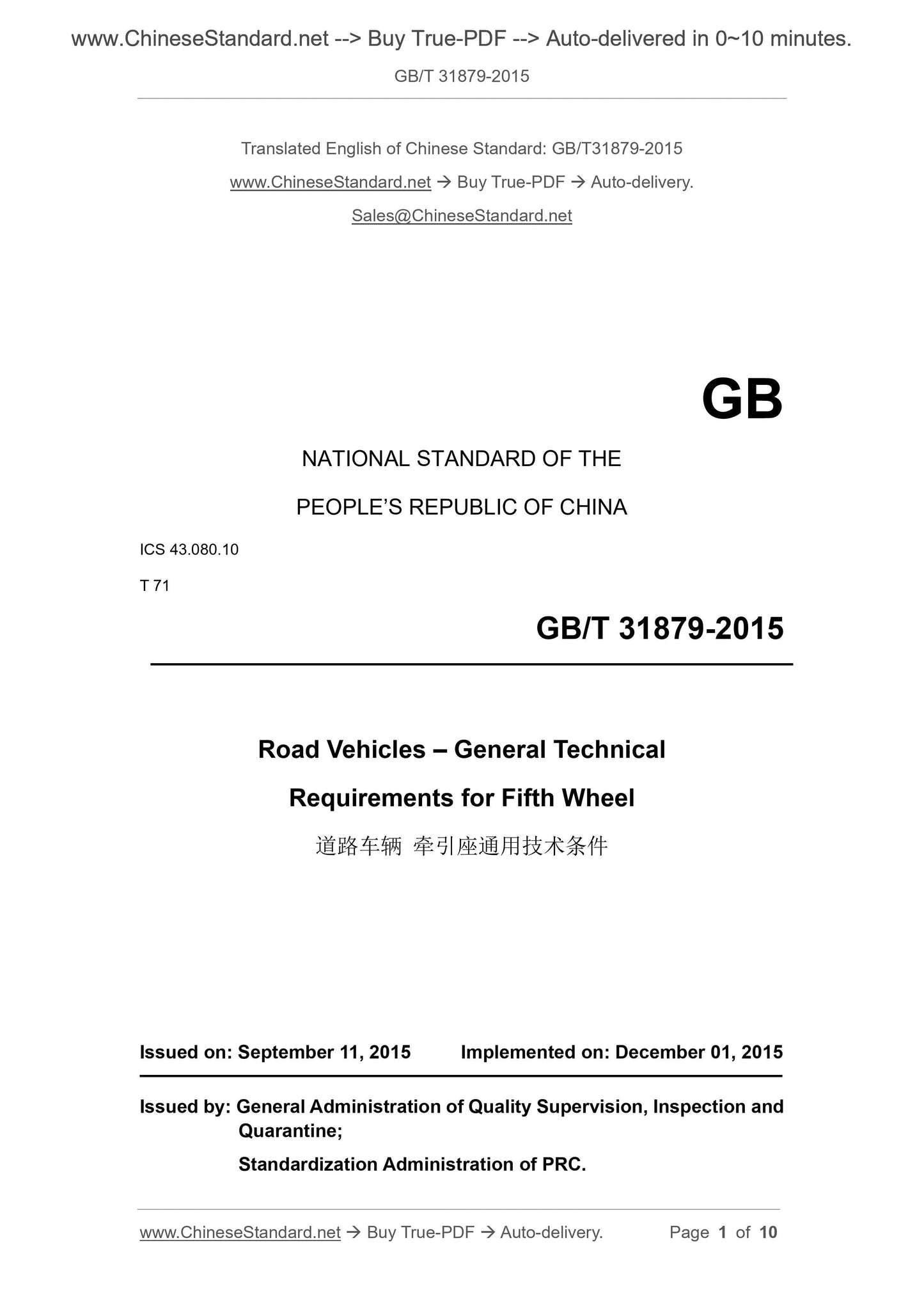1
/
of
5
www.ChineseStandard.us -- Field Test Asia Pte. Ltd.
GB/T 31879-2015 English PDF (GB/T31879-2015)
GB/T 31879-2015 English PDF (GB/T31879-2015)
Regular price
$130.00
Regular price
Sale price
$130.00
Unit price
/
per
Shipping calculated at checkout.
Couldn't load pickup availability
GB/T 31879-2015: Road Vehicles - General Technical Requirements for Fifth Wheel
Delivery: 9 seconds. Download (and Email) true-PDF + Invoice.Get Quotation: Click GB/T 31879-2015 (Self-service in 1-minute)
Newer / historical versions: GB/T 31879-2015
Preview True-PDF
Scope
This Standard specifies the model, technical requirements, test methods, inspectionrules, mark, transportation and storage of the fifth wheel, as well as the accompanying
document of the product.
This Standard is applicable to the 50# and 90# fifth wheels connected with the traction
pin specified in GB/T 4606 and GB/T 4607.
Basic Data
| Standard ID | GB/T 31879-2015 (GB/T31879-2015) |
| Description (Translated English) | Road Vehicles - General Technical Requirements for Fifth Wheel |
| Sector / Industry | National Standard (Recommended) |
| Classification of Chinese Standard | T71 |
| Classification of International Standard | 43.080.10 |
| Word Count Estimation | 8,827 |
| Date of Issue | 2015-09-11 |
| Date of Implementation | 2015-12-01 |
| Quoted Standard | GB/T 4357; GB/T 4606; GB/T 4607; GB/T 9969; GB/T 13306; GB/T 13880; GB/T 20069; HG/T 2196-2004; JB/T 5943; QC/T 484-1999 |
| Regulation (derived from) | National Standard Announcement 2015 No.25 |
| Issuing agency(ies) | General Administration of Quality Supervision, Inspection and Quarantine of the People's Republic of China, Standardization Administration of the People's Republic of China |
| Summary | This Standard specifies the fifth wheel models, technical requirements, test methods, inspection rules, marks, transportation and storage as well as product accompanying documents. This Standard applies to each and GB/T 4606, GB/T 4607 provisions kingpins connected to number 50 and number 90, Block traction. |
Share









